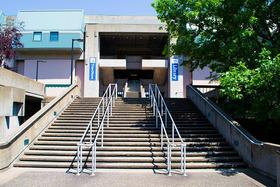Community college is often described as a low-cost alternative to traditional 4-year universities. Students have the opportunity to complete general education requirements or prerequisites at a lower cost, then transfer to the university or college of their choice. Many students also choose to stay and complete their degrees at community colleges.
Graduation is the ultimate goal of pursuing higher education after high school. Whether you attend community college or a traditional university or college, the end goal is to obtain your degree. Unfortunately, that’s not always what happens. Many community college students never end up transferring to another school and a significant number never finish their degrees at all.
In this article, we’ll explore some of the most common issues community college students have with their schools. We’ll talk about the issues that keep students from graduating and review some of the ways community colleges can improve. You’ll also receive some advice for choosing the right school for you to ensure that you graduate on time.
This video discusses the challenges facing community colleges.
What Keeps Community College Students from Graduating?
College is not supposed to be easy, but a newly released survey reveals that there are challenges outside of difficult classwork that prevent students from graduating. Researchers at North Carolina State University created the Revealing Institutional Strengths and Challenges survey which was completed by nearly 6,000 two-year college students from 10 different community colleges around the country.
Here are the top 10 challenges students cite for delaying graduation or dropping out:
- Work
- Paying expenses
- Family and friends
- Online classes
- Parking on campus
- Developmental courses
- Faculty
- Health and disability
- Doing college-level work
- Registering for courses
There is no denying that college is expensive. Even if you choose to attend a community college, you could still be spending an average of $3,660 per year on tuition. This is according to College Board’s 2018 Trends in College Pricing Report which reveals that tuition at public two-year schools is more than twice as high as they were 30 years ago. But tuition is just one of the many costs community college students are responsible for.
According to the Revealing Institutional Strengths and Challenges survey, students were also concerned with living expenses, the cost of books and other supplies, and childcare on top of their tuition. As such, work was tied with paying expenses (both at 34%) for being the biggest concern for community college students. Some of the most commonly cited concerns about work included the following:
- Work hours don’t leave enough time for study
- Wages aren’t high enough to cover expenses in school
- Work schedule prevents the use of campus resources
- Work schedule conflicts with classes
- Work schedule is not flexible during the semester
This creates a catch-22 effect in which students work to help pay for school but are unable to put their maximum effort into their schooling due to conflicts with work. Many students also reported that they had difficulty balancing their social and family life with their schooling. Health issues or disabilities were also a key concern, as were practical issues like finding parking on campus, registering for classes, and dealing with faculty members.
This video reports on how community colleges can help close the graduation gap.
5 Common Problems with Community Colleges
In the 1990s, it became commonplace for schools to track their graduation rates. Since then, it has been a consistent trend that community college graduation rates are much lower than for other postsecondary institutions. Generally speaking, about half of all college students in the United States complete their degrees. With community college students, however, that number is only about one-third, and that is even extending the program to six years rather than two or four.
Many factors contribute to low graduation rates and every school is unique. But the fact that only 35% of community college students graduate with a degree within 6 years suggests that perhaps there is something wrong with the system or the model of community colleges as a whole.
Here are five of the biggest problems with community colleges today:
- Open acceptance with limited evaluation of incoming students
- Inadequate guidance counseling (high student-to-advisor ratios)
- Inconsistent transfer requirements
- Over-emphasized remedial education requirements
- Undefined or conflicting mission statements
Now, let’s take a closer look at each of these issues in greater detail.
1. Open acceptance with limited evaluation of incoming students.
Community colleges are open to just about anyone who wants to attend – that is part of the beauty. The open acceptance and flexible scheduling of community college appeals to many non-traditional students including single parents, older students returning to school, and first-generation students. The problem is that having such a diversity of students means that some students have unique academic needs. Many community colleges fail to identify or address these needs. Improving systems for evaluating incoming students could ensure that the students who need additional help can be placed in remedial classes.
2. Inadequate guidance counseling (high student-to-advisor ratios).
Many students who attend community college are first-generation students or students who are hoping to complete some of their college-level classes before transferring. These two groups are very different but they have one major need that is similar – the need for strong counseling. Having an academic advisor who can help with the selection of classes, planning of course schedules, and registration makes a huge difference. Without guidance, low-income and first-generation students are left to figure out on their own which classes to take, how to schedule them, and how to pay for them.
The issue of financial aid is also a significant problem in community colleges. Though these schools are more affordable than private universities, many students still need financial help to afford tuition. Here is where a unique problem arises. Students are required to take a minimum of 12 credits per semester to be considered full-time students and to qualify for federal financial aid. The problem is that 12 credits per semester are not enough to graduate on time. Without proper guidance, students may not even realize that they are on the wrong path if they hope to graduate within 2 or 4 years.
3. Inconsistent transfer requirements.
For many students, community college is a stepping stone toward a traditional college or university. Students can complete their general education requirements or prerequisites at a lower cost and transfer to the school of their choice later. The problem is that not every school accepts community college transfer credits, and this is not always made clear when the student first enrolls. It may even happen that the school has a policy for accepting transfer credits, but the specific department or major does not. On average, students lose 43% of their academic credits when they transfer.
4. Over-emphasized remedial education requirements.
Remedial education is designed to address gaps in academic skills or knowledge. Though commonly used in primary education, remedial programs can also help first-year students catch up on basic concepts of English and math before they enter college-level classes. According to a report from the Center for American Progress, between 40% and 60% of first-year students take remedial courses.
The problem is that many of these courses don’t count for college credit and only about 10% of students who begin college in remedial classes end up graduating on time. Though remedial classes might not count for credit, they still cost the student money – this makes many students feel as though they are treading water by taking and paying for classes without getting closer to earning a degree. In fact, two out of three remedial students never earn a degree at all.
5. Undefined or conflicting mission statements.
Though community colleges as a whole appeal to non-traditional students and students who seek a more flexible and affordable option in higher education, every school is different. As is true for private colleges and universities, most community colleges have a mission statement that defines what kind of support and opportunities the school aims to provide for students. Some schools, however, don’t have a defined mission statement and there is a limited collaboration between departments which can make things tougher for students. There are also schools where the mission statement was developed when the school was founded but it needs to be updated and redefined to meet the needs of modern students in the twenty-first century.
Another common issue with community colleges is that schools within a city or region often fail to collaborate. By choosing a single school, students limit themselves to the resources and classes that the school has to offer. Were schools collaborate rather than standing alone, they could better serve their students and the community they share.
How Can Community Colleges Improve?
Completion rates will always be a concern for community colleges – it is simply the way they are designed. Many community college students only intend to take a few classes and many transfer schools after completing a certain number of credits. Even so, there are things community colleges, on the whole, can do to improve.
Here are a few things community colleges can improve to boost completion rates:
- Collect measurable data. Before you can institute change, you need to collect data to determine where and what change is necessary and supported. The Achieving the Dream: Community Colleges Count initiative encourages schools to use measurable data to promote higher levels of student success, particularly in low-income and minority students.
- Add dual-enrollment programs. Many community colleges offer classes for high school students but fail to keep those students. By offering dual-enrollment programs, community colleges are more likely to see students finishing their degrees at the school.
- Better preparation in high school. The final year of high school is largely focused on preparing for college, but that preparation is often limited to academics. Community colleges should work with local schools and community groups to teach high school students the basics about college so they will be prepared and have a higher degree of success when they enter.
- Redesign remedial education programs. Remedial education serves a purpose but, in its current state, also limits the students who need it. Many students who are required to enter college in remedial classes end up dropping out. The fact that some students need remedial education is not going to change, but the program itself should.
- Partner with local businesses. Many students who enter community college only intend to take a few classes to improve their career opportunities. By partnering with local businesses, community colleges can tailor their programs to the needs of the local workforce, benefiting both students and businesses.
- Offering more financial aid. Even though community college is more affordable than private school tuition, it is still expensive. This should also involve educating students about the aid that is available to them and helping them apply for it.
- Improving student advising. First-generation and low-income community college students are often unprepared for college life and have no idea how many credits they need, what classes to take, or how to pay for them. Enhanced student advising can address these needs to ensure that more students have a better chance for success.
- Stronger transfer agreements. Many students enter community college with the intention of completing a 2-year degree or taking general education classes so they can transfer to a different school. Community colleges should establish transfer agreements with nearby schools to improve the student success rate at both ends of the line.
As a community college student, you are in charge of your own education. It is your choice which school you attend and what you do with your time there. Keep reading to receive some tips for choosing the best school to meet your needs.
Tips for Choosing the Right School for You
Starting college is a big deal and a major change for many students. There are certain challenges you cannot avoid such as paying for tuition, attending college-level classes, and doing homework. These are things you can’t change, but there are some things you can control.
For example, you can choose a school that has a lower advisor-to-student ratio if you know you’ll need assistance planning your schedule. If you work a full-time job, it might be a good idea to choose a school with online classes or flexible scheduling. Your needs are unique, so it is important that you take the time to identify your own needs and to find the best school to meet them.
Here are some general tips for choosing the right community college:
- Think about your long-term goals. Whether you intend to complete your degree in a community college or transfer elsewhere, you should have a general idea of your long-term goals before picking a school. If you plan to transfer, choose a school whose credits will be accepted by your second school. If you intend to complete your degree in community college, choose a school that has a good reputation for programs in your desired field.
- Understand your individual learning style. Many community college students find that they end up taking control of their education due to limited academic guidance. Understanding your learning style before you choose a school can help you pick one that works well with your individual needs. For example, some schools are primarily online while others are in class.
- Take a look at all of the costs. The average cost for community college tuition is about $3,660 per year, but you also need to factor in other costs such as housing, transportation, and other living expenses. Consider whether you can save money by staying local or if you can obtain a better financial aid package by traveling further away.
- Do your research and visit several schools. As much as you research different schools online, it is still important to make a visit. Pay attention to not just the campus itself, but also to the surrounding area. You should also sit in on a class if you can.
- Talk to current students and alumni. Visiting the school will give you a good sense of what it would be like to attend, but the best thing you can do to get a complete picture is to talk to current students and alumni. Ask questions about academic guidance, faculty, class offerings, student resources, and financial aid.
No community college is perfect – that is the unfortunate truth. Even if there were such a thing as the perfect school, it would only be able to accept so many students. To ensure that you get the services and support you need so you can graduate on time, it is imperative that you do your research. Take the time to survey your options and choose the best community college to suit your needs. Good luck!
Questions? Contact us on Facebook. @communitycollegereview











